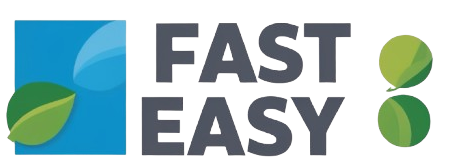The gluten-free and casein-free diet (GFCF) for autism is a dietary approach that many families consider to help children and adults on the autism spectrum. This diet eliminates all sources of gluten and casein, with the idea that removing these proteins can improve behavioral and cognitive symptoms. Let’s explore how the gluten-free and casein-free diet for autism can be beneficial, the challenges involved, and how to implement it effectively.
What is the Gluten-Free and Casein-Free Diet for Autism?
The gluten-free and casein-free diet for autism removes all sources of gluten and casein. Gluten is found in grains like wheat, barley, and rye. Casein is present in milk and dairy products. The theory suggests that removing these proteins reduces the production of peptides that affect the brain, potentially improving behavioral and cognitive symptoms.
Potential Benefits
- Behavioral Improvement: Many families report that the gluten-free and casein-free diet for autism helps reduce repetitive behaviors and improves social interaction. Although scientific evidence is limited, many parents observe positive changes.
- Attention and Focus: Removing gluten and casein may improve concentration and focus in some autistic children, facilitating learning and communication.
- Digestive Health: Many individuals with autism face digestive issues. The gluten-free and casein-free diet for autism alleviates symptoms like bloating, diarrhea, and abdominal pain, improving overall well-being.
Challenges of the Gluten-Free and Casein-Free Diet for Autism
- Dietary Restriction: The gluten-free and casein-free diet for autism can be quite restrictive. This requires eliminating many common foods, which can be challenging for autistic children with limited food preferences.
- Risk of Nutritional Deficiencies: Without careful planning, there may be a risk of deficiencies in essential nutrients like calcium, vitamin D, and fiber. Ensuring a balanced and nutritious diet is crucial.
- Cost and Availability: Gluten-free and casein-free foods can be more expensive and may not always be available everywhere. This can be an obstacle for some families.
Tips for Implementation
- Consult a Professional: Before starting the gluten-free and casein-free diet for autism, consult a doctor or nutritionist specializing in autism. This ensures that all nutritional needs are met.
- Introduce Gradually: Start the gluten-free and casein-free diet for autism gradually. Replace foods one at a time to ease the child’s adaptation.
- Plan Meals: Plan meals and snacks in advance. This ensures a balanced and varied diet. Include fruits, vegetables, lean proteins, and gluten-free grains.
- Explore New Recipes: Try new recipes that fit the gluten-free and casein-free diet for autism. Many online resources and cookbooks offer creative and delicious ideas.
- Monitor Results: Observe and record changes in the child’s behavior, attention, and digestive health after implementing the diet.
Examples of Foods for the Gluten-Free and Casein-Free Diet for Autism
- Allowed: Fruits, vegetables, meats, fish, eggs, nuts, seeds, rice, quinoa, potatoes, almond milk, coconut milk.
- Prohibited: Wheat bread, traditional pasta, cakes, cookies, cow’s milk, cheeses, conventional yogurts.
Conclusion
The gluten-free and casein-free diet for autism can be a valuable tool for some families. However, it is important to approach it with care and professional guidance. Although scientific evidence is limited, many parents report significant improvements in their children’s symptoms. If you are considering this diet, discuss it with a doctor or nutritionist to assess if it is the right choice for your child. With proper planning, the gluten-free and casein-free diet for autism can be an effective approach to improving health and well-being.
For more information on the gluten-free and casein-free diet for autism, visit the Autism Research Institute and the Celiac Disease Foundation.
You might also like:
- Tourist Spots in the Interior of São Paulo: Wonders of the Paulista Countryside
- Emergency Fund in 6 Months: Security Within Your Reach
- The Ideal Credit Card for You: A Complete Guide
- Basic Mashed Potatoes: Simplicity and Flavor in Every Spoonful
- Chef John’s Creamy Corn Pudding: An Irresistible Delight


